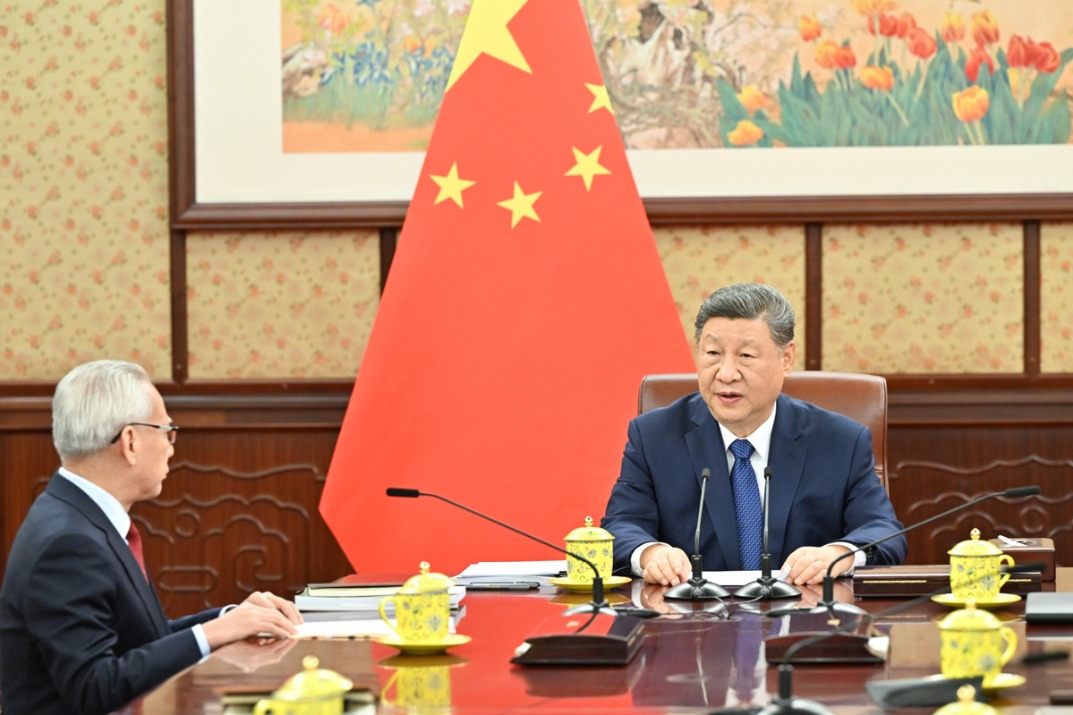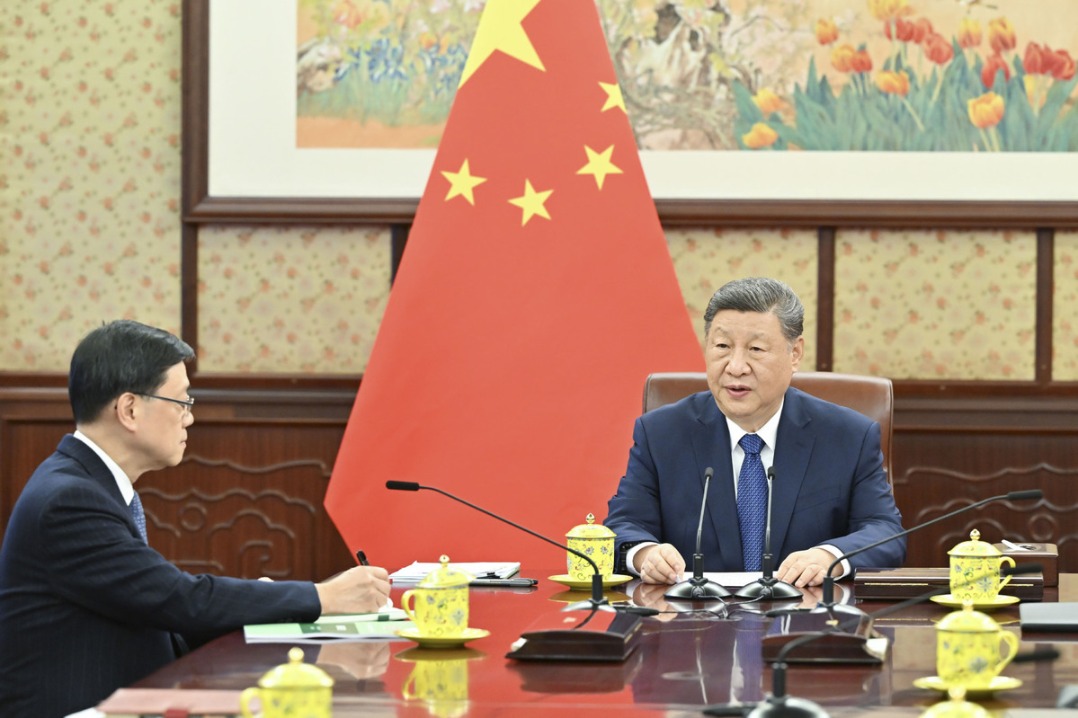Standing tall and proud

| An artist's impression of Beijing's Central Park Plaza, the tallest buildings in the picture, and one of the country's top 10 structures. The project, designed by Ma Yansong, aims to mix nature with urban life. Provided to China Daily |
Netizens and experts pick 10 buildings that represent the future of China's architecture
Ten buildings that represent the future of Chinese urban architecture have been selected from a pool of more than 1,000 competitors by the Architecture and Culture Society of China and Peking University. Among them are the National Stadium, aka the Bird's Nest, the Jin Mao Tower and the Canton Tower. Three buildings that are still to be completed are also on the list: the Central Park Plaza in Beijing, the Shanghai Tower and the China Zun, a skyscraper in the central business district of Beijing.
The selection, 40 percent of which is decided by netizens' vote and the rest by an expert panel, aims to promote architecture that will improve urban development in China.
"These are the future of Chinese architecture," says Wang Mingxian, chairman of the judging panel and deputy director of architectural research at the China Art Research Institute. "They are selected for both their academic value and social impact. They skillfully incorporate Chinese traditional culture and the modern spirit."
While the CCTV headquarters by Rotterdam-based architecture firm OMA made it to the shortlist, it wasn't selected in the end because of the very few votes it got from the netizens.
The Shanghai Tower draws upon the Shanghai nongtang alleyways and transforms it into a skyscraper, providing indoor public space on nine floors.
"We want to build a vertical version of the urban neighborhood," says Xia Jun, regional design director of Gensler, design firm of the tower. "The winding shape is inspired by Shanghai's romantic and yielding urban dynamic. It also effectively reduces the wind (effect) as Shanghai is often affected by typhoons."
A majority of the buildings are designed by international architects, except for the Xiangshan campus at the China Academy of Art by Wang Shu, who won the world's top architecture prize Pritzker, the Central Park Plaza by Ma Yansong and the China Zun by Wu Chen.
While Chinese cities are often called the testing field for international architects, Ma says this is simply a process a city has to go through before becoming a truly magnificent city.
"A city has to be very open and significant to attract so many architects. The question is how we choose from them," he says.
Ma's new project the Central Park Plaza is now under construction. Situated between the CBD area in Beijing and the Chaoyang Park, the 120,000-square-meter complex aims to connect the city with nature by implementing Ma's concept of Shan Shui City, the city of mountains and water.
While the list is dominated by skyscrapers, which usually stands for wealth and status in the city, Chinese author Liu Xinwu, who is also an architecture critic, called for more public space at the announcement of the top 10 buildings.
"As a citizen, I wish there was more space for the public both in and outside the architecture. So people are more aware of the role architecture can play in the city."
sunyuanqing@chinadaily.com.cn
| China World Trade Center Tower III, in the city center, is one of the tallest buildings in Beijing. Gong Wenbao / China Daily |
| The Xiangshan campus at the China Academy of Art in Hangzhou is a work by award-winning designer Wang Shu. Provided to China Daily |
| The National Stadium, also known as the Bird's Nest, was the main venue for the 2008 Beijing Olympics. Provided to China Daily |
| Jin Mao Tower, one of the country's tallest buildings, is an icon of Shanghai's skyline. Gao Erqiang / China Daily |
(China Daily Africa Weekly 06/20/2014 page26)
Today's Top News
- Crossing a milestone in the journey called Sinology
- China-Russia media forum held in Beijing
- Where mobility will drive China and the West
- HK community strongly supports Lai's conviction
- Japan paying high price for PM's rhetoric
- Japan's move to mislead public firmly opposed



































